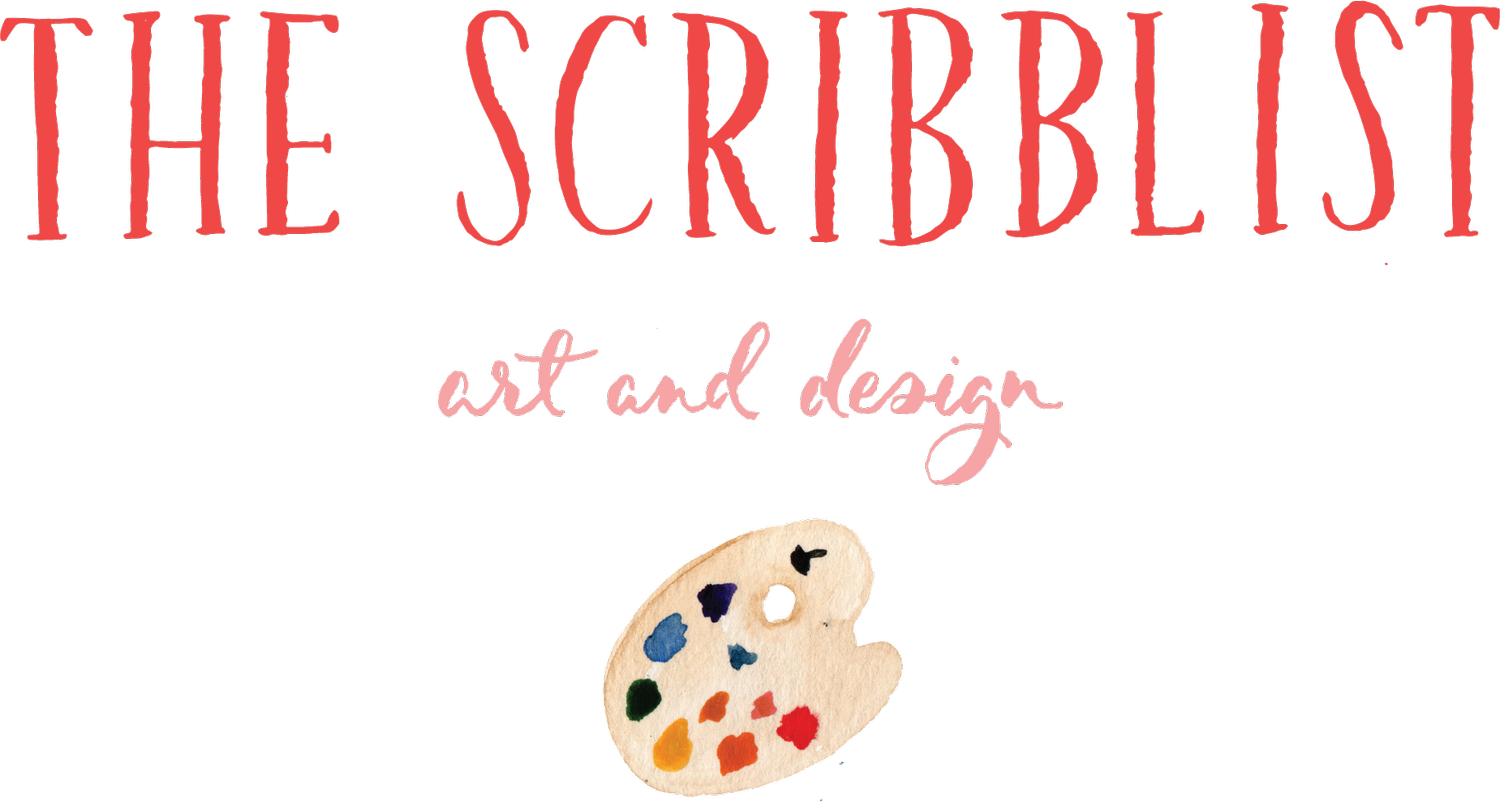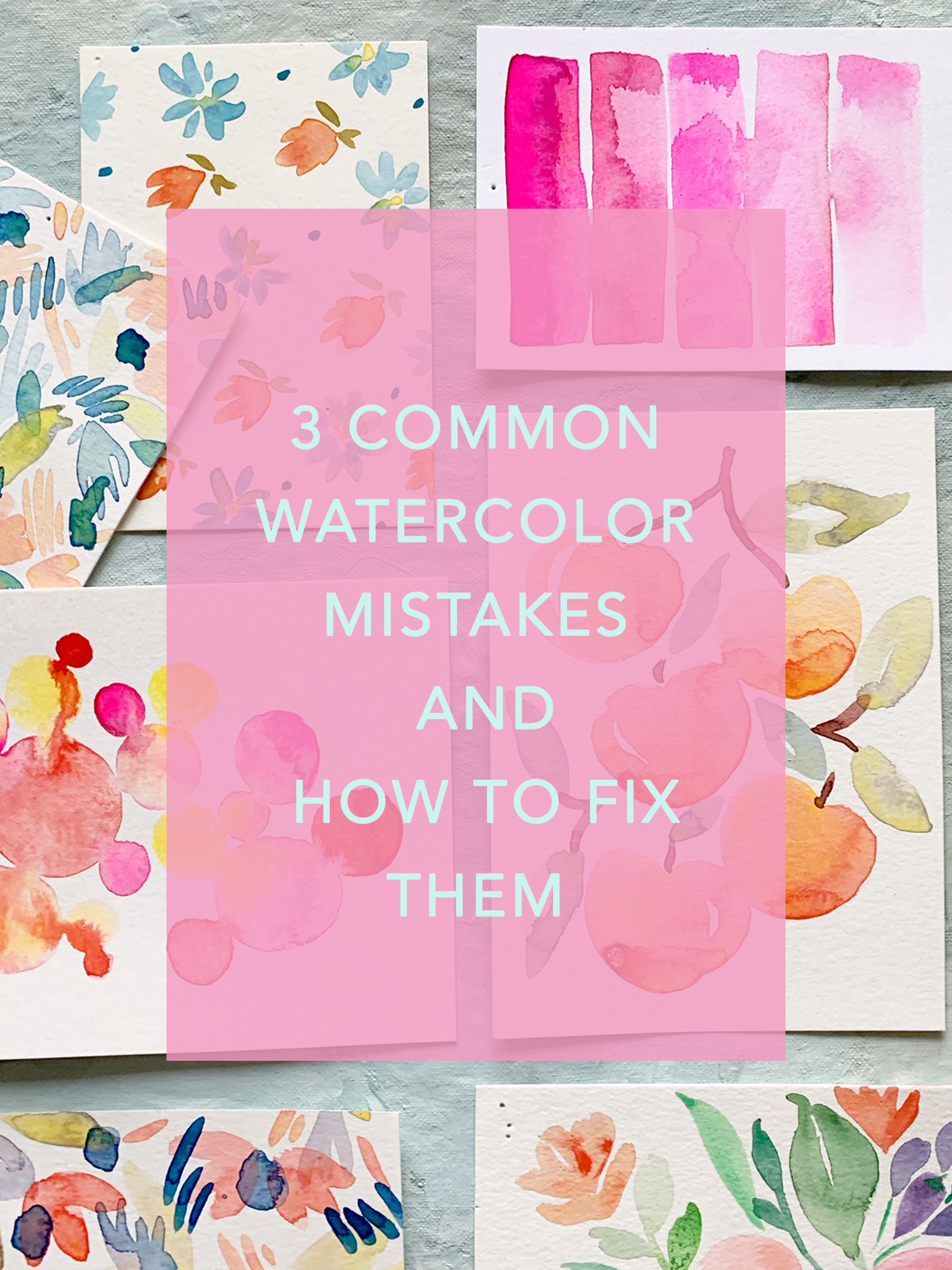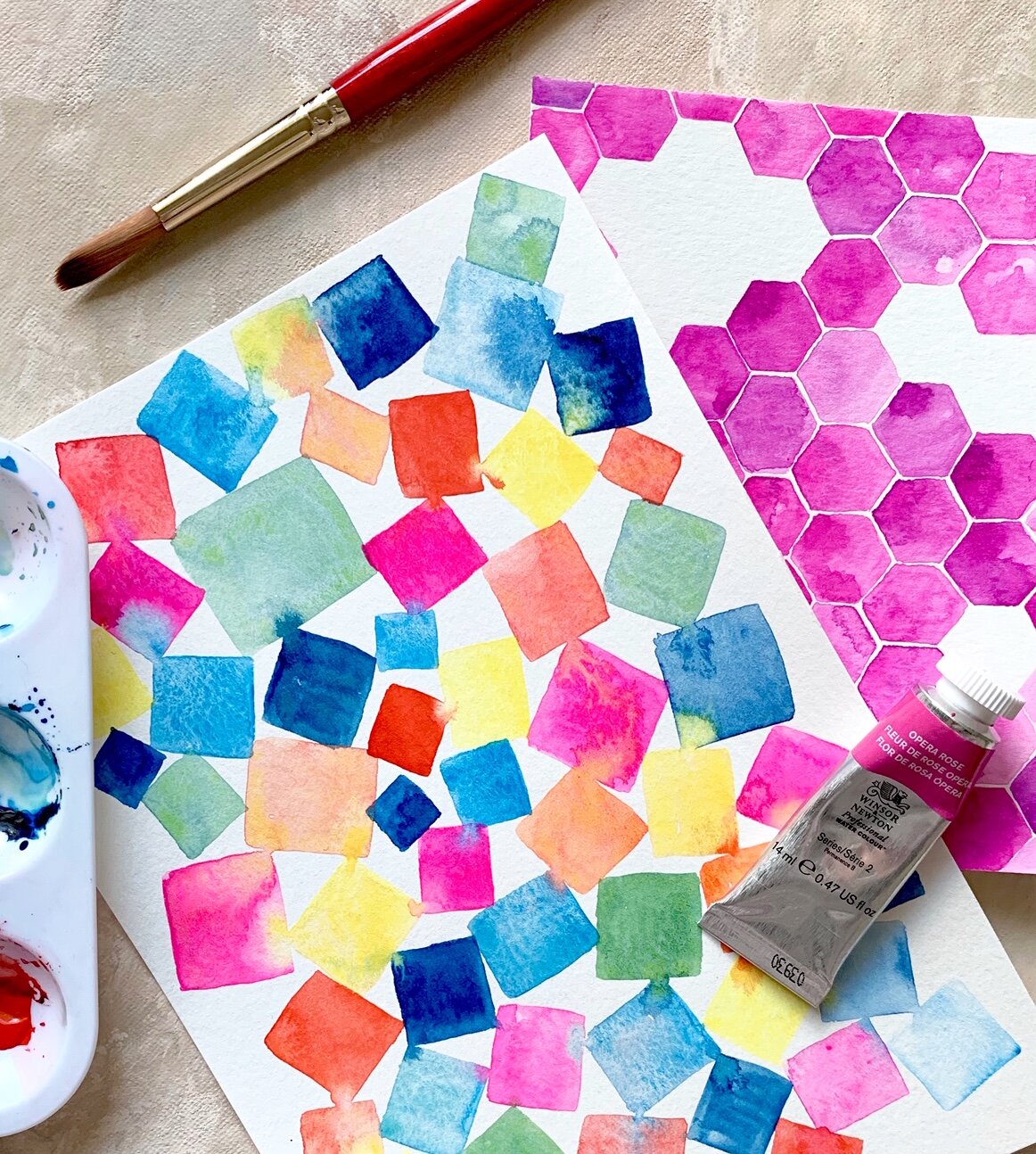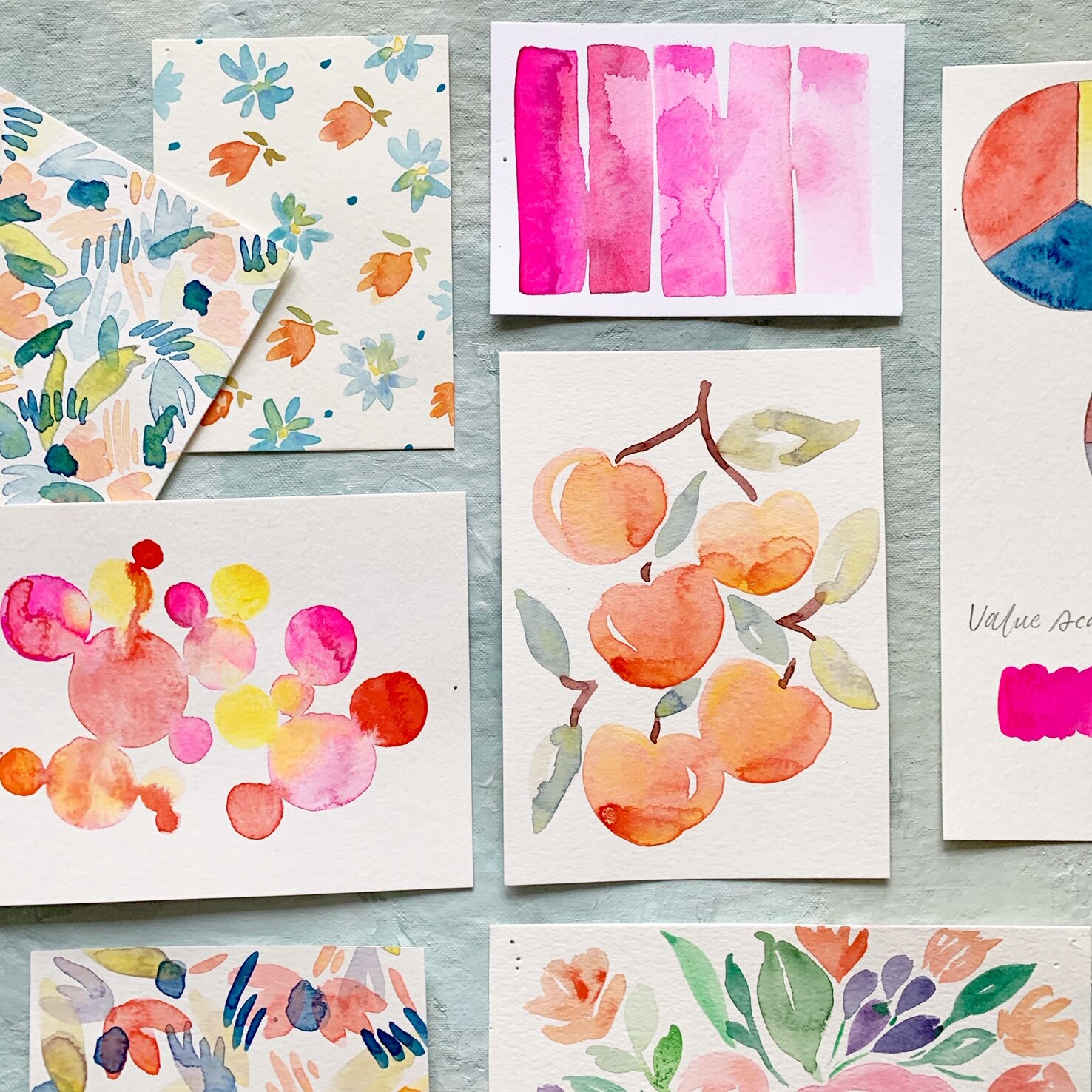3 Common Watercolor Mistakes and How to Fix Them
Ah, watercolor. A beautiful, flowing medium that is so relaxing, until….whoops. What happened there? Why won’t my color flow on the page? Wait? Why is brown now? Ahhhh!
Yep. We’ve all been there. Today we are taking a look at 3 common mistakes in watercolor painting and how to avoid them!
1. Not Enough Water
Watercolor is so different from other painting mediums like acrylic because it requires quite a bit of water to activate the paint and allow it flow smoothly from the brush to the paper. In my beginner workshops, one of the most common issues I see is that people aren’t achieving the right water to paint ratio. This is especially true if you are using watercolor from a tube (versus dried pans). A little bit of watercolor paint goes a long way, especially when you mix it properly with water.
You’ve probably noticed that watercolor paint tubes are tiny. That’s because if it is a good quality paint (more on that later), it’s quite pigmented and needs to be diluted with water. Again, a little paint goes a long way! They should last for quite a while, especially since you can reuse the paint even once it has dried in your palette. Just reactivate with water!
So how do you know when you have enough? The consistency should be thin, and when you apply the paint to the paper, it shouldn’t streak or have a dry look to it. It also shouldn’t look like a glob of paint, or be as thick as acrylic would be. It should flow smoothly across the paper with ease.
2. Too Much Water
On the flip side, you can use TOO much water as well. This is especially true if you are trying to work in the wet on wet technique, where the colors can diffuse into each other. You want enough water to allow the paint to flow, but not so much that it creates a puddle on the paper essentially blocking any movement or pigment from entering that area. Too much water that puddles can also create an area where the pigment sits and you will end up with a hard edge of color in that area.
Again, the goal is for it to flow. If you notice a bead of water sitting on the paper, you’ve got too much water. You can use a dry brush to pick up the excess - just put the tip of your brush into the puddle and watch it soak up the water! You may have to dry your brush off and repeat this a few times, depending on how large the puddle is.
3. Poor Quality Supplies
Another big obstacle for learning how to paint with watercolor is the quality of the supplies you are using. I’m not saying you have to have all of the most expensive, top of the line materials, but you will want to be mindful of what you are using so that the materials themselves aren’t preventing you from achieving beautiful results. I definitely learned this the hard way! Invest in a few high quality items, and you will be much happier with your results.
I recommend investing in one or two high quality brushes, like the Princeton Heritage Round #6 or #10 brush, and the Princeton Heritage ½ inch Stroke brush, as well as professional grade tube paint in the primary colors. My favorite is Winsor and Newton’s Professional Watercolor, and I would start with Scarlet Lake, Lemon Yellow Deep, and Prussian Blue. You can create oranges, greens, and purples from these three colors. From there, you can start to add in more colors to your collection, like some of my favorites, Opera Rose or Payne’s Gray.
You can certainly use the pans of dried watercolor that come in trays, but the overall look will differ. I used these for years, and still occasionally do, but they are a little less vibrant and not ideal for certain techniques. They’re still a great, affordable option if you are wanting to dip your toe into the world of watercolor.
Finally, you will need some watercolor paper. It is important to use paper specifically designed for watercolor, which is often a heavier weight so that it doesn’t buckle from the addition of the water you will be painting with. My favorite budget friendly option is the Canson XL Cold Press, but if you want to really take your work to the next level, I recommend Arches Cold Press. If you want to go into deeper detail, I wrote all about my favorite supplies in an early blog post, click here.
I hope these tips help you on your journey to creating you watercolor masterpieces. For more watercolor tips and other tools for creatives, sign up for our newsletter here! Let me know in the comments what you would like to learn next!
By using the links provided, we do receive a small percentage of sales from our affiliate companies. We only support and recommend things we use and love. Thank you for supporting the brands that help support us.







